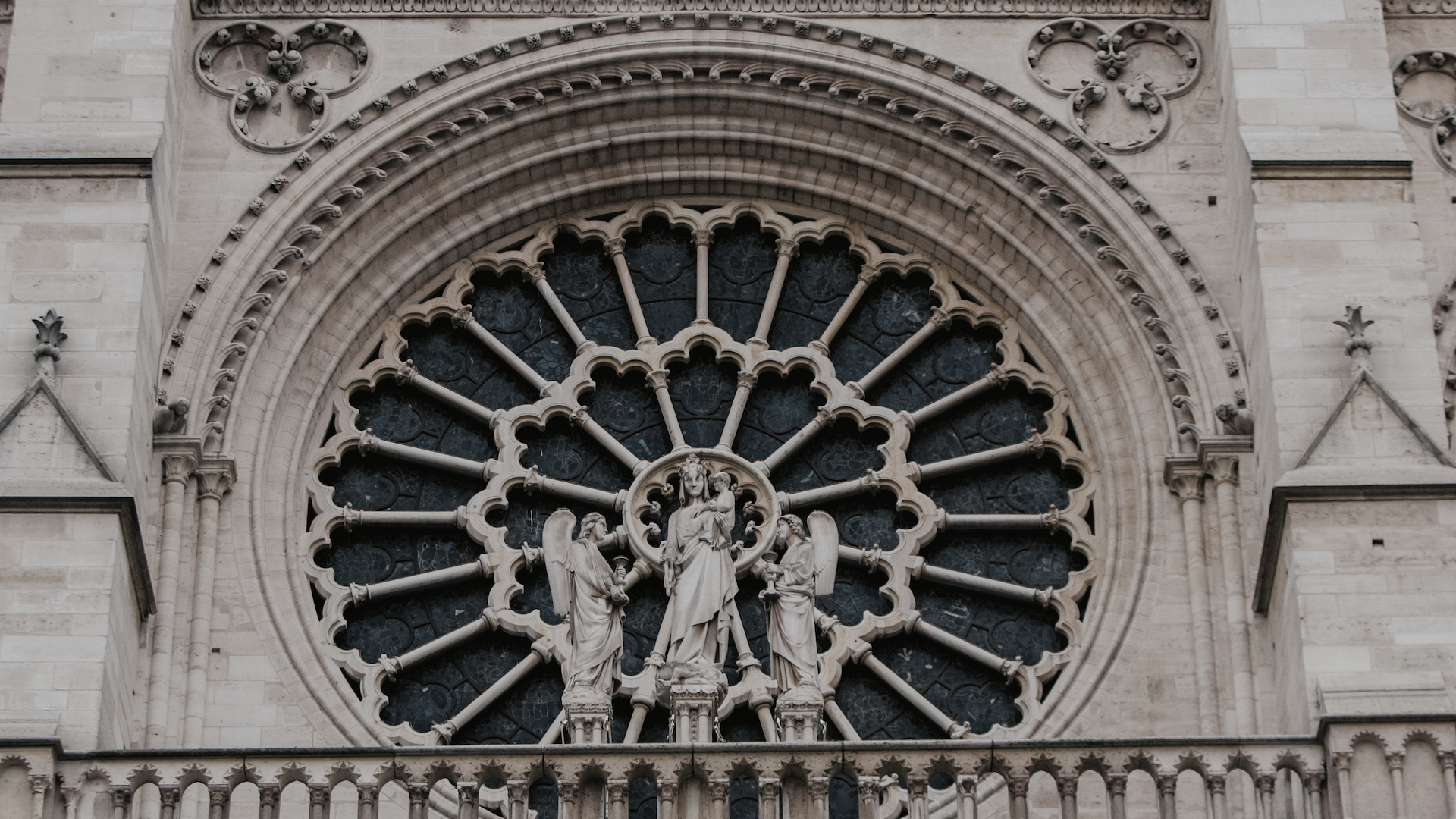
As flames illuminated the night sky in the City of Lights, Parisians stood in a somber yet somehow hopeful salute, singing “Ave Maria” and other hymns as firefighters worked tirelessly to put out the fire in the beloved Notre Dame Cathedral.
The 850-year-old cathedral, whose name means “Our Lady,” has been a silent yet active witness to centuries of French and world history. The English king Henry VI was crowned here, Napoleon Bonaparte was crowned emperor in the sanctuary, and Joan of Arc was canonized in the cathedral.
Beginnings
Construction of the cathedral began in 1163 under the reign of King Louis VII and was completed in 1345. It was built in the middle of the Seine River on an island, the Île de la Cité. It is considered a prime example of medieval Gothic architecture.
The cathedral’s centrality lies not just in hearts but in geography. Notre Dame marks “Point Zero,” the point from which all distances in France’s capital city are measured.
“Watching helplessly as it was devoured by flame caused the entire world—not just Parisians—to gasp at the realization that it might not now survive.”
The spire that was destroyed in the April 15 fire contained religious relics—teeth, bones, or hair—of St. Denis and St. Geneviève, patron saints of Paris. The cathedral houses artwork, paintings, sculptures, religious artifacts, and a seventeenth-century pipe organ. And as a testament to their enormous worth, a human chain was formed to help remove artifacts from the blaze. One of the artifacts removed is what Catholics believe to be Jesus’s crown of thorns.
The building survived revolutions, riots, and two world wars, acting as a grounding force in the turbulent tides of humanity. Watching helplessly as it was devoured by flame caused the entire world—not just Parisians—to gasp at the realization that it might not now survive.
Triumph of a Nation
Victor Hugo’s The Hunchback of Notre Dame drew attention to the decrepit state to which the national icon had fallen during the French Revolution. The iconic cathedral was looted and vandalized during the revolution. Hugo’s novel spurred renovation by the king, and Notre Dame was restored to its former glory. The novel caused the nation to remember how the cathedral was a testament to the toil and triumph of their nation.
“The greatest products of architecture are less the works of individuals than of society; rather the offspring of a nation’s effort, than the inspired flash of a man of genius,” Hugo wrote. “Great edifices, like great mountains, are the work of centuries. . . . Time is the architect, the nation is the builder.”
Hugo’s quote rings true of Notre Dame, for the cathedral is seen by the French not simply as one man’s crown and glory, for it hardly could be, because of the 182 years it took to complete. Generations of men and women lived and died during the construction. It represents the years it takes to build a society.
Hugo’s characters in the novel were those society shunned for their race—Gypsy—and deformities, a hunched back and deformed face, yet Esmerelda and Quasimodo typified the kind of people Jesus would invite to dine with him.
An Invitation to Hope
A beautiful image taken by a Reuters photographer shows the cross and the altar at the front of the sanctuary still standing amidst the smoldering embers of the now-extinguished fire. It’s quickly becoming a beacon of hope and rallying point the world over.
“I was reminded that the seemingly darkest moment in human history—the crucifixion of our Christ—was a harbinger of hope.”
For those of us who believe, it’s also a symbol that Christ and his kingdom cannot be overthrown. Though powers, principalities, and even buildings may fall, we are reminded that surpassing power belongs to God alone. Our accomplishments, as delightful and awe-inspiring as they may be, fall short of the One whose kingdom will stand forever.
As I looked at the photo of the gilded cross that reflected light from the now-exposed ceiling, I was reminded that the seemingly darkest moment in human history—the crucifixion of our Christ—was a harbinger of hope. The Light of life could not be overcome by death. Hope shined through the darkness.
Through the news reports, I listened to the hymns being sung in front of Notre Dame, and I was filled with hope that faith burns on in Paris. I pray that the light of Christ will shine through the darkness of devastation and hope will be kindled anew.
Caroline Anderson is a writer and photographer with the IMB. She currently lives in Southeast Asia. Her childhood in Asia consisted of two important ingredients: braving hot chili peppers and telling people about Jesus.

